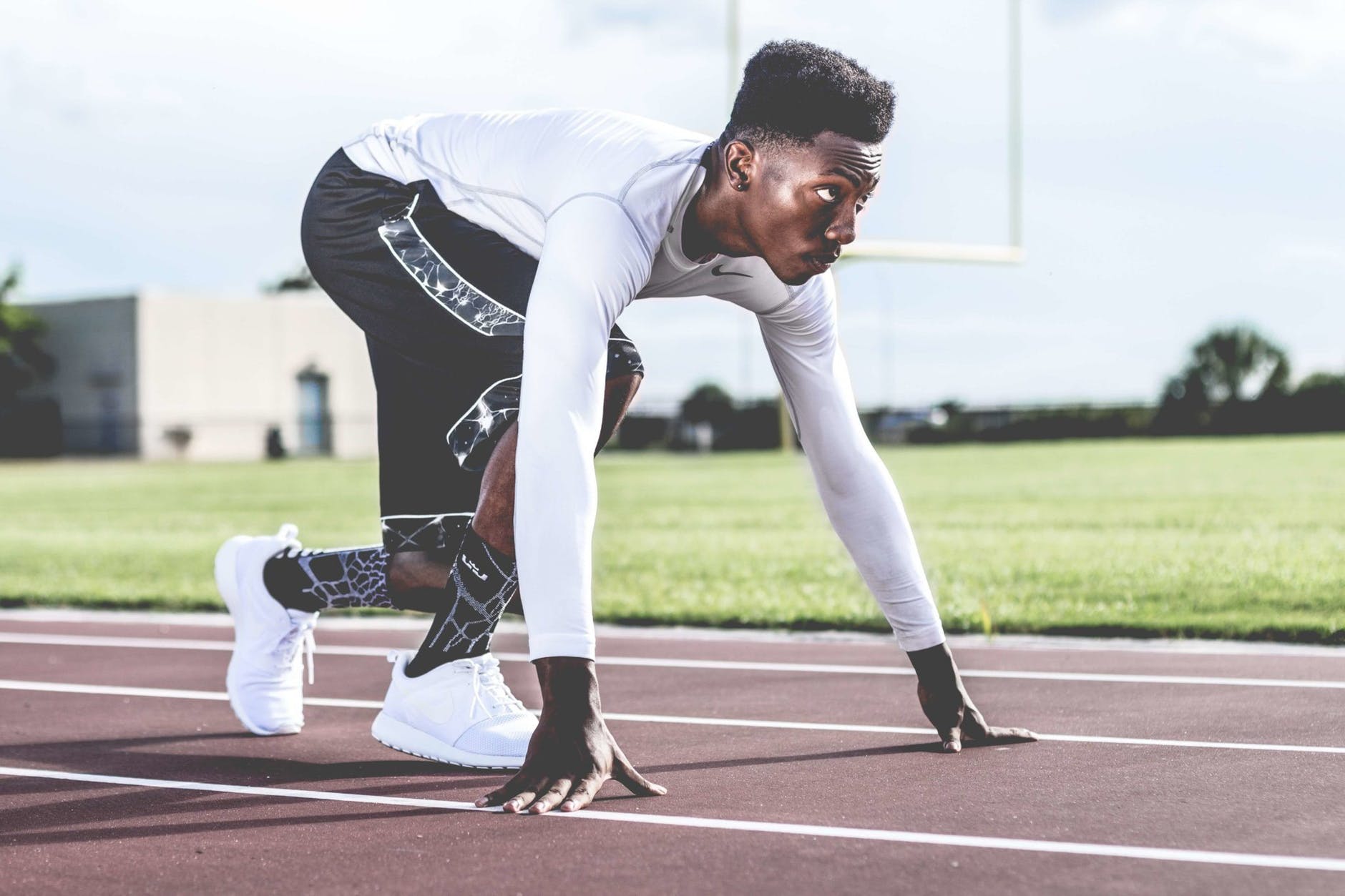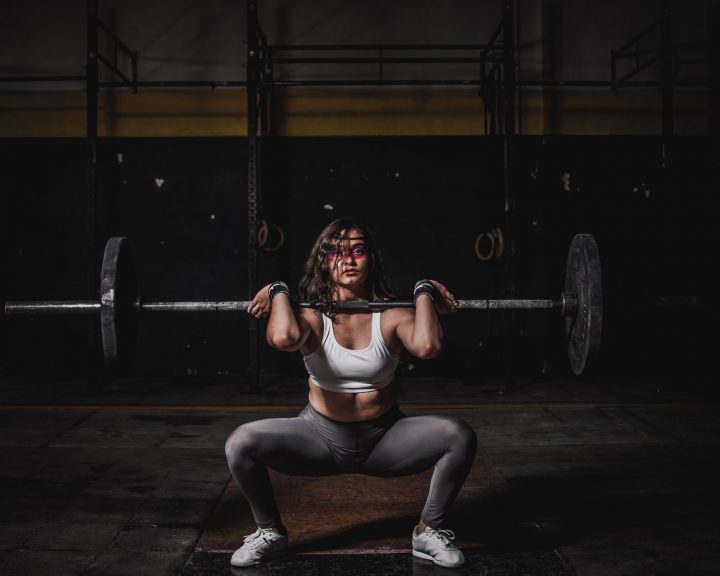I’m going to start this post with a workout program. Below is a look at a week of workouts for an elite, international-caliber sprinter. This is a late preparatory phase/early pre-season phase workout program. After I talk about this program then I have some surprising things to say.
| Day One | Day Two | Day Three | Day Four | Day Five |
| Split squats, 3×4-8×80% each leg
One-legged Romanian deadlifts, 3×4-8 each leg Pause bench press, 3×3-6×70% Pull-ups, 3×4-8 Standing kettlebell press, 3×4-8 each arm |
Split snatch, 3×3-6×70%
One-legged split clean, 3×3-6×70% each leg Snatch pulls, 3×3-6×90% |
Off | Eccentric squats, 3×4-8×60%
Deadlifts, 3×3-6×80% Dumbbell bench press, 3×4-8 Bent-over rows, 3×4-8 Standing military press, 3x-48 |
One-legged split snatch, 3×3-6×70% each leg
Split clean, 3×3-6×70% Clean pulls, 3×3-6×90% |
This workout focuses on a number of things that are unique to high-level sprinting. One leg is in contact with the ground at a time (thus the focus on split and one-legged exercises). There is a need to maintain posture when generating large amounts of force against the ground (thus the focus on strength, pause lifts, and eccentric-focused lifts). There is a need to exert force against the ground, so almost every exercise involves doing this. It’s a great workout, very challenging. It’s also completely useless for most athletes to use.
In order for that workout to be an effective one, there are a number of things that have to be in place:
- The athlete needs consistent and correct technique on the clean and the snatch.
- Once #1 is in place, the athlete has to be able to perform the split and one-legged versions of the lifts.
- Once #2 is in place, the athlete needs to have done them long enough to have a 1-RM on them.
- The athlete needs a back squat, RDL, and split squat strength foundation.
- Once #4 is in place, the athlete needs a good 1-RM on the split squats.
- Once #4 is in place, the athlete needs experience performing eccentric (i.e. 10 seconds of descent) versions of the back squat.
- Repeat #4 and #6 with the bench press.
In other words, a few years of work is needed before even getting to this workout program.
All this relates to an important concept – fundamentals are important. Fundamentals are important for athletics and for strength and conditioning.
So what do fundamentals mean in strength and conditioning? There are fundamental exercises in strength and conditioning. If an athlete can do these exercises well, they can learn anything. Let’s look at those fundamental exercises:
- Squats: Athletes should be able to back squat and front squat. In fact, if I only have one exercise to do I will pick back squats. The trunk is strengthened, the lower body is strengthened, the skeleton is strengthened, we can become enormously strong, and it involves exerting force against the ground.
- Hip hinges: These exercises are critical for hamstring health, especially in athletes that sprint or need to use these muscles. The Romanian deadlift is the big one here. If you can learn these techniques you can perform good mornings, back raises, glute ham raises, etc.
- Pulls: It’s important to be able to pick heavy things up off the ground. This means deadlifts. Develops the same range of things that squats do. If an athlete can do this, they can move on to sled work and heavy tires.
- Presses: Fundamental movement for the upper body. I like the bench press and the standing military press. Between them the develop the chest, shoulders, triceps, trunk, and the skeleton of the upper body.
- Rows: Fundamental movement for the upper body. These develop the lats, deltoids, and biceps. They are also critical for balancing out the work we do on presses with the shoulder joint. The bent over row and pull-ups are my favorites here. I know that technically pull-ups aren’t a row, but you have to fit them in somewhere.
- Olympic lifts: If we’re going to do these in our program, then we need to understand how to perform the power clean and power snatch from the floor. I use the hang variations to progress athletes to this (takes about 18-24 weeks).
Before we can move on to other, sexier, exercises we need serious mastery of the fundamentals. Things I look for:
- Squats: Double bodyweight (males), 1.5x bodyweight (females) for back squats
- Hip hinges: Hip hinges should track squats. So if we squat 110 kilograms, then we should be able to do Romanian Deadlifts with that amount…
- Pulls: Same as squats.
- Presses: Bodyweight for males on the bench press, 60% of bodyweight for females (on the bench press)
- Rows: 10 pull-ups (males), 1 good pull up (females); bent-over rows that track the bench press
- Olympic lifts: Bodyweight (males) or 60% (females) for power clean or 85% (males) and 50% (females) for the power snatch
Once we’re here, then we can start moving into more interesting exercises and workouts. But, for many athletes this may take years to get here.
What happens if we don’t do this? Then our body isn’t prepared for high-level strength and conditioning. We have joint injuries to look forward to because we have not built our base. In addition, many of the exercises in the sample workout below will be ineffective because the athlete won’t have the strength base to use them appropriately.



